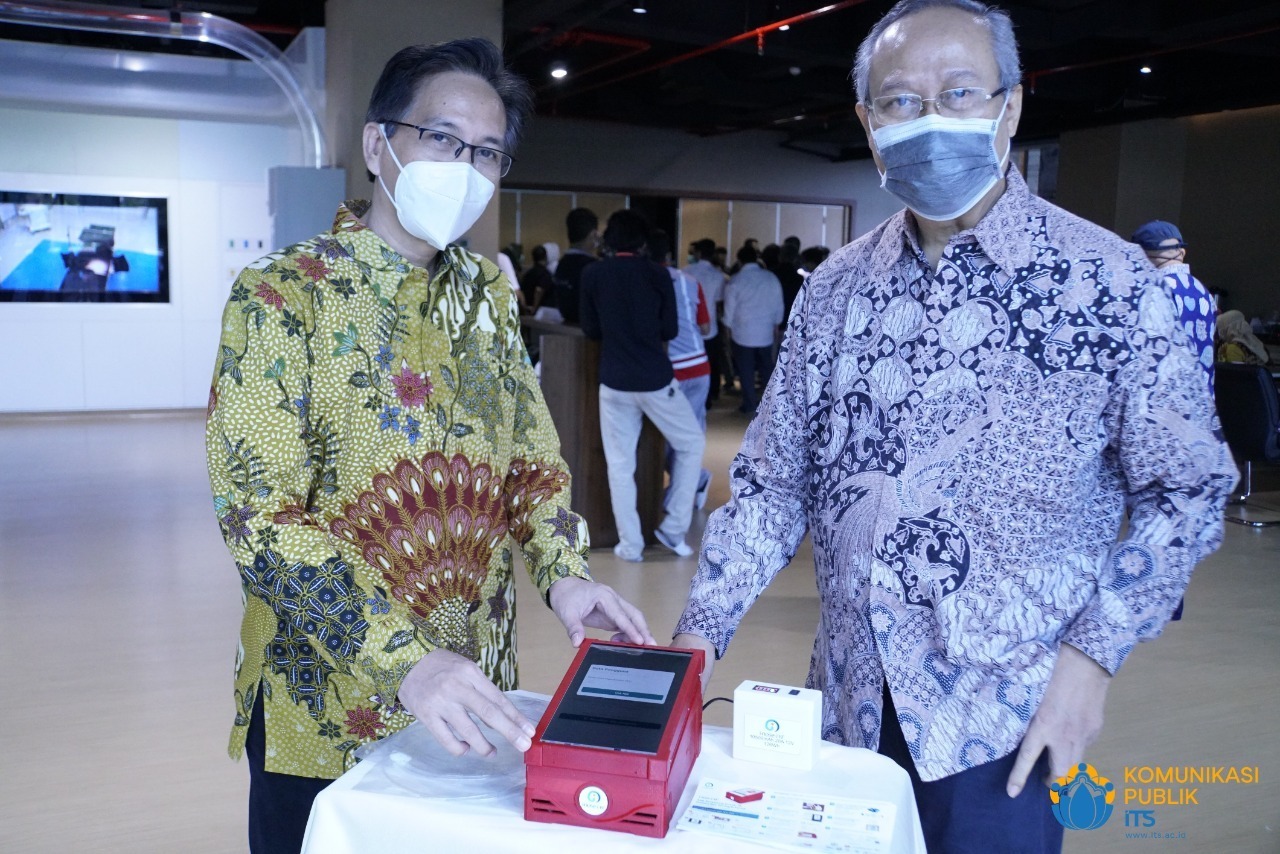Again, ITS Professor Becomes The Top 2% Scientist in The World 2022

Prof. Drs.Ec. Ir. Riyanarto Sarno, M.Sc, Ph.D., an ITS professor who becomes The Top 2% Scientist in The World: Single Year Impact 2021-2022
ITS Campus News – One of the professors of Institut Teknologi Sepuluh Nopember (ITS), Prof. Drs.Ec. Ir. Riyanarto Sarno, M.Sc, Ph.D., becomes one of 200,409 world researchers at The Top 2% Scientist in the World: Single Year Impact 2021-2022 for the third time. Like the previous year, this announcement was released online by Stanford University and Elsevier Report on October 10th, 2022.
The study was conducted by Professor John PA Ioannidis, M.D., Ph.D. from Stanford University, Jeroen Baas from Elsevier, and Kevin Boyack from SciTech Strategies through the publication of the fourth version of the Updated Science-wide Author Databases of Standardized Citation Indicators. Scientists are classified into 22 scientific fields and 176 sub-fields in c-score citation rankings outside of self-citation (non-self-citation).
Becoming the only academician from ITS, the professor who is familiarly called Riyan is also listed as one of the 98 researchers from Indonesia who are in the ranks of the Top 2% Scientist in the World. The Informatics Engineering Department ITS lecturer received a grade of c-score of 366 citations from September 2021 to September 2022. “Regarding my latest research, this year I have published 16 Scopus indexed journals and Web of Science (WoS),” Riyan said .
In details, this artificial intelligence (AI) expert in the health sector in 2022 will publish one Scopus Quartile 3 (Q3) indexed journal, five Scopus Quartile 2 (Q2) indexed journals, and nine Scopus indexed journals. high, namely Quartile 1 (Q1) which also has impact factor WoS. Science Citation Index (SCI) and Science Citation Index Expanded (SCIE) WoS are citation indexes managed by Clarivate Analytics which have journal citation standards, where a high impact factor is equivalent to a high percentile Scopus.
Besides journals, Riyan has also conducted research in the form of creating an AI-based brain surgery support tool called Stereotactic to accurately determine the small anatomical locations in the brain. This research was conducted because the tools to support Stereotactic operations still depend on imported products and are expensive.
“In the brain, many small anatomy, for example the ventral intermediate (VIM) nucleus is only about three millimeters in size, so it requires the tool with high accuracy,” said the lecturer who is also an experienced consultant in this information system audit.

The Rector of ITS, Prof. Dr. Ir. Mochamad Ashari, M.Eng., IPU, A.Eng. (left), and Prof. Drs.Ec. Ir. Riyanarto Sarno, M.Sc, Ph.D. while showing the i-nose c-19 device
Although focusing on AI and signal and image processing, Riyan also explained that the use of AI can actually be applied to various other technologies such as business analysis, graph theory development, information systems audit, to fraud detection which can be done online. online. Furthermore, AI also has the potential to be applied to the development of future technologies, namely genetic engineering.
The doctoral alumnus of University of New Brunswick, Canada in 1992 revealed that his research was not only limited to publications. However, Riyan is always present in realizing the downstreaming of research results for mass production of technology, so that it can be used more widely by the public. “I do basic, applied, to development research to realize the production of innovation results so that they are not limited to writing,” he said.
In terms of downstreaming technology, Riyan emphasized the importance of the Level of Technology Readiness (TKT) in research. Continuing the previous statement, the lecturer who was born in 1959 explained that TKT has nine levels. The first to third levels are in the form of basic research for publication, the fourth to sixth levels are in the form of applied research to produce prototypes, and the seventh to ninth levels are in the form of downstream research results.
As a scientist who has been involved in research for more than three decades, Riyan believes that research is a vital activity because it generates scientific discoveries and developments. Thus, new scientific contributions can be used to increase efficiency and effectiveness in all aspects of life. “Every time, there is a development of new knowledge. So we try to make a prototype that contains novelty from basic research,” he explained.

Prof. Drs. Ec. Ir. Riyanarto Sarno, M.Sc, Ph.D. (in the middle of a hat) when he became a training trainer for writing international scientific article publications
In order to encourage the progress of the research climate, this bespectacled man hopes that the younger generations in Indonesia are willing to be directly involved in research, especially for the sake of the continuity of increasing human resources (HR) which are constantly changing. He also advised that postgraduate students are the driving force of research at ITS, so ideas and creativity must unite to produce new innovations.
As an annual publication, the fourth version of TheTop 2% Scientist in the World: Single Year Impact 2021-2022 can be accessed through Elsevier’s official website at elsevier.digitalcommonsdata.com/datasets/btchxktzyw/4. Previously, Elsevier published the first version in July 2019, the second version in October 2020, and the third version in October 2021. (ITS PR)
Related News
-
Facilitating Creativity of Students, ITS Information Systems Department Presents CCWS
ITS Department of Information Systems students conduct a discussion in one of the available spaces in the ITS Digital
December 24, 2022 22:12 -
ITS Explores Electrification Cooperation with PT Vale Indonesia
ITS Campus, ITS News — Following up on the Memorandum of Understanding (MoU) with PT Vale Indonesia, Institut Teknologi
December 24, 2022 22:12 -
ITS Reaches Top 7 BRIN Collaborators with 309 Scientific Publications
ITS Campus, ITS News — Institut Teknologi Sepuluh Nopember (ITS) continues demonstrating its commitment to strengthening collaboration in research
December 24, 2022 22:12 -
The Only One from Indonesia, ITS Student Becomes Erasmus+ Scholarship Awardee
ITS Campus, ITS News — Civitas academica of Institut Teknologi Sepuluh Nopember (ITS) has once again contributed to making
December 24, 2022 22:12
